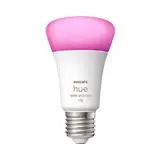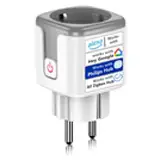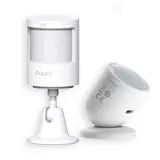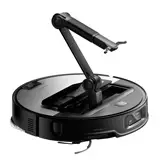We use information collected through cookies and similar technologies to improve your experience on our site, analyze how you use it and for marketing purposes.
Your privacy settings
We and our partners use information collected through cookies and similar technologies to improve your experience on our site, analyze how you use it and for marketing purposes. Because we respect your right to privacy, you can choose not to allow some types of cookies. However, blocking some types of cookies may impact your experience of the site and the services we are able to offer. In some cases, data obtained from cookies is shared with third parties for analytics or marketing reasons. You can exercise your right to opt-out of that sharing at any time by disabling cookies.
Manage Consent Preferences
Necessary
Always ON
These cookies and scripts are necessary for the website to function and cannot be switched off. They are usually only set in response to actions made by you which amount to a request for services, such as setting your privacy preferences, logging in or filling in forms. You can set your browser to block oralert you about these cookies, but some parts of the site will not then work. These cookies do not store any personally identifiable information.
Analytics
These cookies and scripts allow us to count visits and traffic sources, so we can measure and improve the performance of our site. They help us know which pages are the most and least popular and see how visitors move around the site. All information these cookies collect is aggregated and therefore anonymous. If you do not allow these cookies and scripts, we will not know when you have visited our site.
Embedded Videos
These cookies and scripts may be set through our site by external video hosting services likeYouTube or Vimeo. They may be used to deliver video content on our website. It's possible for the video provider to build a profile of your interests and show you relevant adverts on this or other websites. They do not directly store personal information, but are based on uniquely identifying your browser and internet device. If you do not allow these cookies or scripts it is possible that embedded video will not function as expected.
Google Fonts
Google Fonts is a font embedding service library. Google Fonts are stored on Google's CDN. The Google Fonts API is designed to limit the collection, storage, and use of end-user data to only what is needed to serve fonts efficiently. Use of Google Fonts API is unauthenticated. No cookies are sent by website visitors to the Google Fonts API. Requests to the Google Fonts API are made to resource-specific domains, such as fonts.googleapis.com or fonts.gstatic.com. This means your font requests are separate from and don't contain any credentials you send to google.com while using other Google services that are authenticated, such as Gmail.
Marketing
These cookies and scripts may be set through our site by our advertising partners. They may be used by those companies to build a profile of your interests and show you relevant adverts on other sites. They do not store directly personal information, but are based on uniquely identifying your browser and internet device. If you do not allow these cookies and scripts, you will experience less targeted advertising.






How to create a home theater with smart speakers
Can you imagine enjoying the magic of the movies without leaving home? You no longer need to spend a fortune on specialized rooms. With today's technology, creating a home theater with smart speakers is easier and more affordable than you think. Get ready to transform your living room into an immersive cinema experience - it's time to take the leap to a new level of entertainment!
The Rise of the Smart Home Theater
Home theater has evolved a lot. Before, it was a luxury reserved for a select few. Now, thanks to smart speakers and affordable technology, anyone can have a quality surround sound system in their home. The combination of intelligent audio and high-definition video is redefining the way we consume multimedia content.
Why choose smart speakers for your home theater?
Planning: The Key to Success
Before you jump into buying smart speakers, it's crucial to carefully plan your home theater. A good plan will save you time, money and frustration.
Evaluate your space
Consider the size of your room - is it a large or small space? This will determine how many speakers you need and their ideal placement. A small space requires fewer loudspeakers than a large one to achieve a balanced sound. Look at the acoustics of the room. Are there a lot of hard surfaces that reflect sound (such as brick walls or tile floors)? If so, consider adding carpeting, curtains or acoustical panels to improve sound quality.
Define your budget
Set a realistic budget. Smart speakers vary widely in price. Research the different options and decide how much you are willing to spend. Remember to include other essentials such as cables, wall mounts and a good TV or projector in your budget.
Choose the type of sound system
There are different types of surround sound systems. The most common are:
Selecting the Right Smart Speakers
Choosing the right smart speakers is critical to getting the best home theater experience. Consider the following factors:
Sound quality
Of course, sound quality is the most important thing. Read reviews, listen to demos in stores or online, and compare different models. Look for speakers that deliver clear, crisp and balanced sound.
Compatibility
Make sure your speakers are compatible with your TV or projector, your media player (such as an Apple TV or Roku) and your preferred voice assistant (such as Alexa, Google Assistant or Siri). Cross-device compatibility is essential for a smooth user experience.
Connectivity
Check the connectivity options of the speakers - do they have Bluetooth, Wi-Fi, HDMI ARC or optical inputs? The more connectivity options, the more flexibility you have.
Brand and ecosystem
Consider the brand and ecosystem of the speakers. Some brands offer better integration between their products and services. For example, if you already have other Amazon Echo devices, choosing Echo speakers for your home theater might be a good option.
Configuration: Step by Step
Once you have all the equipment, it's time to set it up. Follow these steps to create your home theater with smart speakers:
Strategic Speaker Placement
Speaker placement is critical to creating realistic surround sound. Here are some general guidelines:
Optimizing your Home Theater Experience
Once you've set up your sound system, there are a few more things you can do to optimize your home theater experience:
Lighting
Lighting plays an important role in creating the cinematic atmosphere. Reduce ambient light as much as possible. Consider using blackout curtains or blinds to block out sunlight. You can also use dim lights or mood lighting to create a relaxing atmosphere.
Comfort Comfort
Make sure your seating is comfortable. Invest in a good sofa or recliners. Have blankets and pillows on hand to keep your guests comfortable.
Acoustic insulation
If you want to take your home theater experience to the next level, consider soundproofing your room. This will prevent sound from escaping and disturbing your neighbors. You can use acoustic panels, thick curtains or carpeting to improve sound insulation.
Common Problem Solving
Sometimes, things don't go as planned. Here are some common problems you may encounter when setting up your home theater with smart speakers, and how to fix them:
Recommendations and Best Practices
To make sure your smart speaker home theater is a resounding success, here are some recommendations and best practices:
The Future of Smart Home Cinema
Smart home theater is constantly evolving. As technology advances, we can expect to see even more innovations in the future. For example, we are likely to see smart speakers with more advanced spatial audio capabilities, deeper integration with streaming services, and more immersive virtual and augmented reality experiences.
Conclusion
Creating a home theater with smart speakers is a great way to enjoy your favorite movies and TV shows with exceptional sound and video quality. With careful planning, selection of the right equipment and proper setup, you can transform your living room into an immersive cinematic experience. Are you ready to take the leap and enjoy the magic of home theater? Share this article with your friends and family so they can create their own smart home theater too!
Related Posts
Smart TVs vs. Media Players: Which to choose?
Tired of traditional programming? Want complete control over what you watch on your TV? The battle between Smart TVs and media players is heating up. Both offer access to a world of content, but which is the best option for you? Let's find out!
Smart LED lighting for modern decor
Lighting is no longer just a functional necessity. Today, it is a powerful tool for transforming spaces and defining environments. Smart LED lighting has revolutionized the way we decorate our homes and offices, offering unprecedented flexibility and customization. What is smart LED lighting? Intelligent LED lighting combines the ...
Turn your bathroom into a spa with smart devices.
Can you imagine transforming your bathroom into a personal sanctuary? A space where stress dissolves and relaxation envelops you completely. Forget about expensive spa visits. With the help of smart technology, you can create an oasis of wellness in the comfort of your home. A Smart Oasis: The Spa at Home ...
TOP 10 Home Party Automation Ideas
Tired of organizing parties at home that leave you exhausted and with no time to enjoy yourself? Automation is your ally. It's not about robots serving cocktails (although that would be great), but about using technology to simplify tasks and optimize the environment. Prepare your home for an unforgettable experience and relax while your guests ...